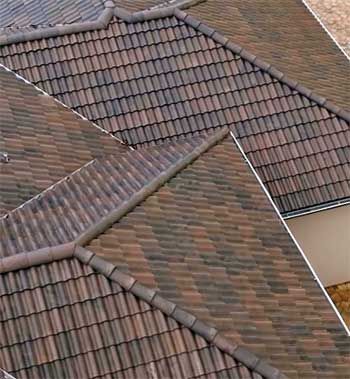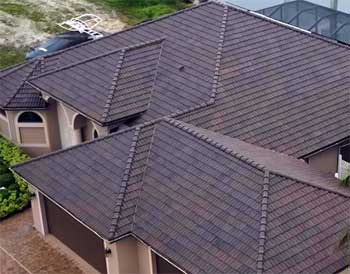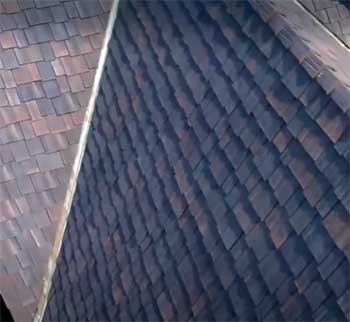I’ve been through the roofing ringer, and let me tell you, finding a material that checks all the boxes—durability, style, eco-friendliness—is no small feat. That’s why I’m shouting from the rooftops about Brava Roof Tiles.
These synthetic wonders mimic the charm of cedar shakes, slate, and Spanish tiles without the headaches of traditional materials. With a 50-year warranty, top-tier impact resistance, and a look that fools even the sharpest eyes, Brava’s a game-changer.
Trust me, if you’re in the market for a roof that lasts and looks stunning, Brava’s your ticket.
My Journey With Brava Roof Tiles

When I decided to replace my aging asphalt shingle roof, I was overwhelmed by options.
Asphalt was cheap but boring, and natural slate or cedar shakes felt like a maintenance nightmare.
Then I stumbled across Brava Roof Tiles while scrolling through homeowner forums.
The promise of a synthetic material that looked like the real deal—without the upkeep—piqued my interest.
I ordered samples, and when they arrived, I was floored.
The cedar shake tiles had the same rugged texture as real wood, and the slate tiles carried that elegant, chiseled look I’d always admired.
I went with Brava’s Cedar Shake tiles for my colonial-style home. The installation process was smoother than I expected, thanks to my contractor’s familiarity with Brava’s system. Unlike heavy slate or clay, these lightweight tiles didn’t require structural reinforcements, which saved me a chunk of change.
The color options were a highlight—I picked a weathered blend that gave my house that timeless, rustic vibe. Neighbors kept asking if I’d splurged on real cedar, and I couldn’t help but grin when I told them it was composite.
Ten months in, my roof still looks pristine. We’ve had some brutal storms, including a hailstorm that dented my neighbor’s metal roof, but my Brava tiles shrugged it off. The peace of mind is unreal—no worrying about rot, mold, or fading colors.
I’ve even noticed my energy bills dipping slightly, likely thanks to the tiles’ reflective properties. My only regret? Not discovering Brava sooner. It’s transformed my home’s curb appeal and given me confidence that this roof will outlast my mortgage.
The Pros of Brava Roof Tiles
- Unmatched Durability

Let’s talk toughness. Brava tiles are engineered to laugh in the face of Mother Nature.
They boast a Class 4 impact rating, which means they can handle hailstones up to two inches without cracking.
I’ve seen what hail can do to asphalt shingles—it’s not pretty.
Brava’s tiles also hold up against winds up to 211 mph with proper installation.
Living in a windy area, I sleep better knowing my roof won’t end up in the neighbor’s yard during a storm. Plus, they’re Class A fire-resistant, which could even shave a bit off your insurance premiums.
- Aesthetic Versatility
If you’re picky about your home’s look (like me), Brava’s got you covered. Their tiles come in cedar shake, slate, and Spanish barrel styles, each with a range of colors that pop.
I spent hours agonizing over shades, but Brava’s multi-color blending process makes every tile look natural, not like some cookie-cutter knockoff. Whether you want the rustic charm of weathered cedar or the sleek elegance of slate, Brava nails the authenticity. My guests still can’t believe my “cedar” roof is synthetic—it’s that convincing.
- Eco-Friendly Edge
I’m no tree-hugger, but I feel good knowing my roof isn’t harming the planet. Brava tiles are made from 100% recycled plastics and minerals, turning landfill-bound materials into something beautiful. They’re recyclable too, so when my roof eventually needs replacing (in, like, 50 years), it won’t clog up a dump.
The manufacturing process uses less energy than mining slate or firing clay tiles, which gives Brava extra points for sustainability. It’s a win-win: my house looks amazing, and I’m doing my part for the environment.
- Low Maintenance Bliss
Here’s where Brava really shines. Unlike cedar shakes that need constant cleaning or sealing, Brava tiles are practically set-and-forget. They resist mold, algae, and insects, so I don’t have to climb up there with a pressure washer every few years.
A quick rinse with soap and water during my annual inspection keeps them looking fresh. This low-maintenance life saves me time and money, which I’d rather spend on, say, a weekend getaway than roof repairs.
- Lightweight and Easy Installation
Heavy materials like slate or clay can require costly structural upgrades. Not Brava. These tiles are about one-third the weight of their natural counterparts, making installation a breeze. My contractor was thrilled, as the lighter weight meant faster work and lower labor costs.
The interlocking design also helps ensure a snug fit, reducing the chance of leaks. If you’re retrofitting an older home, Brava’s lightweight nature is a godsend—no need to reinforce your roof’s framework.
The Not-So-Good Parts of Brava Roof Tiles
- Higher Upfront Cost

Let’s not sugarcoat it: Brava tiles aren’t cheap.
You’re looking at $8-15 per square foot installed, compared to $4-8 for asphalt shingles.
When I got my quote, I had to take a deep breath. But then I crunched the numbers.
With a 50-year warranty and minimal maintenance, Brava’s long-term value started to make sense.
Still, if your budget’s tight, the initial sticker shock might give you pause. It’s an investment, and you’ll need to weigh whether the durability and aesthetics are worth the upfront hit.
- Limited Installer Expertise
Finding a contractor who knows Brava’s system can be tricky, especially in rural areas. I got lucky with a certified installer nearby, but not everyone’s so fortunate. Improper installation can void the warranty or lead to issues down the line, so you’ll want to vet your contractor carefully.
Brava offers training resources, but it’s on you to ensure your roofer’s up to speed. This isn’t a dealbreaker, but it’s something to plan for when shopping around.
- Color Fading Concerns
While Brava’s UV stabilizers are top-notch, some homeowners report slight fading after years of intense sun exposure. I haven’t noticed this on my roof yet, but I live in a temperate climate. If you’re in a sun-soaked region, choosing a lighter color or ensuring proper attic ventilation can help.
It’s not a widespread issue, but it’s worth considering if your home gets blasted by UV rays year-round. Regular inspections can catch any subtle changes early.
- Not a Household Name
Brava’s been around since 2008, but it’s not as well-known as brands like DaVinci or GAF. When I mentioned Brava to friends, I got a lot of blank stares. This doesn’t affect performance, but if you’re selling your home, some buyers might prefer a more recognizable brand.
I’m not planning to move anytime soon, so this wasn’t a big deal for me, but it’s something to keep in mind if resale value is a priority.
Maintenance Tips For Brava Roof Tiles
- Annual Inspections Are Key
Even though Brava tiles are low-maintenance, don’t skip the yearly check-up. I set a reminder every spring to have my contractor inspect the roof. They look for loose tiles, check the flashing, and ensure the underlayment’s intact.
It takes maybe an hour and costs a couple hundred bucks, but it’s worth it to catch small issues before they escalate. If you’re handy, you can do a visual check yourself—just be careful walking on the roof, as excessive foot traffic can stress the tiles.
- Keep It Clean
Brava tiles resist algae and mold, but debris like leaves or twigs can pile up. I give my roof a gentle rinse with a garden hose and mild soap once a year. Avoid pressure washers—they can damage the tiles’ surface.
If you live near trees, check your gutters too, as clogged ones can cause water to pool and stress the roof. A quick cleaning keeps your roof looking sharp and ensures proper drainage.
- Mind the Ventilation
Good attic ventilation is a must to prevent heat buildup, which can accelerate wear on any roof. I noticed my energy bills dropped after installing Brava tiles, partly because their reflective properties keep my home cooler.
But without proper ventilation, trapped heat could affect the tiles’ longevity. Make sure your attic has adequate vents, and consider a ridge vent if your roof’s design allows. It’s a small tweak that pays off big.
- Watch for Extreme Weather
Brava’s tiles are tough, but after a major storm, it’s smart to take a peek. I had a hailstorm roll through last summer, and while my tiles were fine, I still checked for any dislodged pieces or damaged flashing.
If you live in a hurricane-prone area, ensure your installer uses screws instead of nails for extra wind resistance. Brava’s Miami-Dade County certification means they’re built for brutal weather, but a quick post-storm glance never hurts.
- Stay on Top of Warranty Details
Brava’s 50-year warranty is a major selling point, but you’ve got to follow the rules to keep it valid. I keep a file with my installation records and warranty info, and I made sure my contractor was certified.
If you need to make a claim, having documentation handy makes the process smoother. Check with Brava’s customer service if you’re unsure about anything—better safe than sorry.
Comparing Brava To the Competition
Let’s stack Brava up against the big players: DaVinci, EcoStar, and good old asphalt shingles. I’ll keep it real and break down what makes Brava stand out—or where it falls short—in a way that feels like we’re chatting over coffee.
- Brava Vs. DaVinci
DaVinci’s another heavy hitter in the synthetic roofing world, and I considered their tiles before choosing Brava. Both brands offer cedar shake and slate looks, but Brava’s tiles feel more authentic to me. DaVinci’s are smoother, almost too perfect, lacking the natural imperfections Brava nails with its molds.
Brava’s mineral pigments also give deeper, more varied colors compared to DaVinci’s resin-based hues, which can look a bit flat. Price-wise, they’re close—DaVinci runs $13-19 per square foot installed, slightly more than Brava’s $8-15.
DaVinci’s been around longer, so they’ve got more brand recognition, which might sway buyers if you’re selling your home. But Brava’s thicker tiles (up to 7/8 inch vs. DaVinci’s thinner profiles) and Class 4 impact rating give it an edge for durability. If you want a roof that screams “real” and can take a beating, Brava’s my pick.
- Brava Vs. EcoStar
EcoStar’s synthetic slate and shakes are solid contenders, made from recycled rubber and plastic. They’re eco-friendly like Brava, but I found their texture less convincing—more like a rubbery imitation than the rugged look Brava achieves.
EcoStar’s pricing is similar, around $10-16 per square foot, but their tiles feel flimsier, and some users report warping in extreme heat. Brava’s Class A fire rating (with proper underlayment) beats EcoStar’s, which often requires special underlayments to hit the same mark. EcoStar’s advantage is wider availability in some regions, but Brava’s color variety and realistic molding won me over. If authenticity and toughness are your priorities, Brava’s the better bet.
- Brava Vs. Asphalt Shingles
Asphalt shingles are the budget king, costing $4-8 per square foot installed. They’re everywhere, and for good reason—they’re cheap and easy to install. But they’re also boring and short-lived, with a 20-30 year lifespan compared to Brava’s 50 years.
Asphalt fades, cracks, and grows algae, meaning you’ll be replacing or repairing it sooner. Brava’s tiles, while pricier, offer unmatched aesthetics and durability. My asphalt roof looked tired after a decade; my Brava roof still looks brand-new. If you’re planning to stay in your home long-term, Brava’s worth the splurge over asphalt’s quick-fix appeal.
- Brava Vs. Natural Materials
Natural cedar, slate, and clay tiles have undeniable charm, but they’re high-maintenance and heavy. Cedar shakes need regular sealing to prevent rot and mold, and they’re a fire hazard without treatment. Slate and clay are gorgeous but weigh a ton, often requiring structural upgrades.
Brava gives you the same look—seriously, you can’t tell the difference from the street—without the upkeep or weight. Natural slate can cost $15-30 per square foot, and cedar’s $10-20, making Brava’s $8-15 a steal for similar aesthetics with better performance.
If you love the classic look but hate the hassle, Brava’s your answer.
Frequently Asked Questions (FAQ)
Brava tiles come with a 50-year limited warranty, and with proper installation, they can last just as long—or longer. Their Class 4 impact rating and resistance to weather, mold, and insects mean they hold up better than most materials. I’ve heard from homeowners who’ve had Brava roofs for over a decade with no issues, and the tiles still look as good as day one. Regular inspections and minimal upkeep can keep them going for decades.
Composite roofs like Brava’s aren’t perfect. The biggest hurdle is the upfront cost—$8-15 per square foot installed is steep compared to asphalt. Finding a skilled installer can also be a challenge, as not every roofer is familiar with composite systems. Some users report slight fading in extreme sun, though Brava’s UV stabilizers minimize this. Lastly, composite roofs aren’t as well-known as traditional materials, which could affect resale value in some markets. Weigh these against the long-term savings and durability.
It depends on your priorities. Brava’s tiles have a more authentic texture and deeper color variation thanks to their mineral pigments and natural molds. They’re also slightly cheaper ($8-15 vs. DaVinci’s $13-19 per square foot) and thicker, offering better impact resistance. DaVinci’s smoother tiles and wider brand recognition might appeal if you’re selling your home soon. I chose Brava for its realistic look and durability, but DaVinci’s a solid runner-up if you prefer a sleeker aesthetic.
Brava roof tiles typically run $8-15 per square foot installed, depending on your roof’s complexity, location, and tile style. Material costs alone are $7-12 per square foot. Compared to asphalt ($4-8) or natural slate ($15-30), Brava’s mid-range but offers better longevity and lower maintenance. My installation came in on the higher end due to my roof’s pitch, but the reduced upkeep and 50-year warranty make it feel like a bargain over time.
Why Brava Roof Tiles Are My Forever Choice?
After living with Brava Roof Tiles for nearly a year, I’m convinced they’re the gold standard. They’ve transformed my home’s look, slashed my maintenance worries, and given me peace of mind with their durability.
Sure, the upfront cost stings, but the long-term savings, eco-friendly cred, and jaw-dropping aesthetics make it worth every penny. If you want a roof that’s tough, beautiful, and sustainable, Brava’s the way to go.
Don’t settle for less—your home deserves the best, and Brava delivers.
